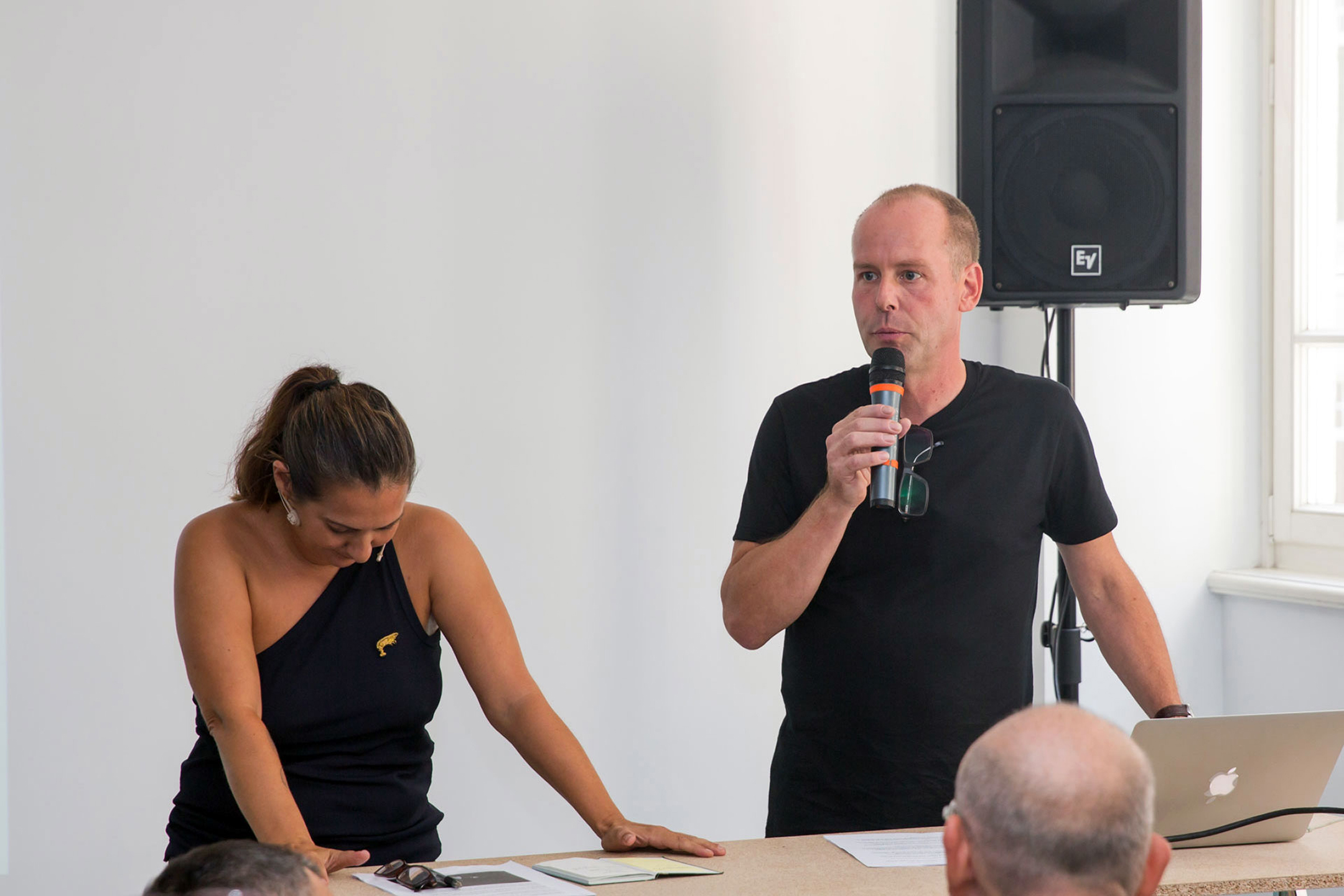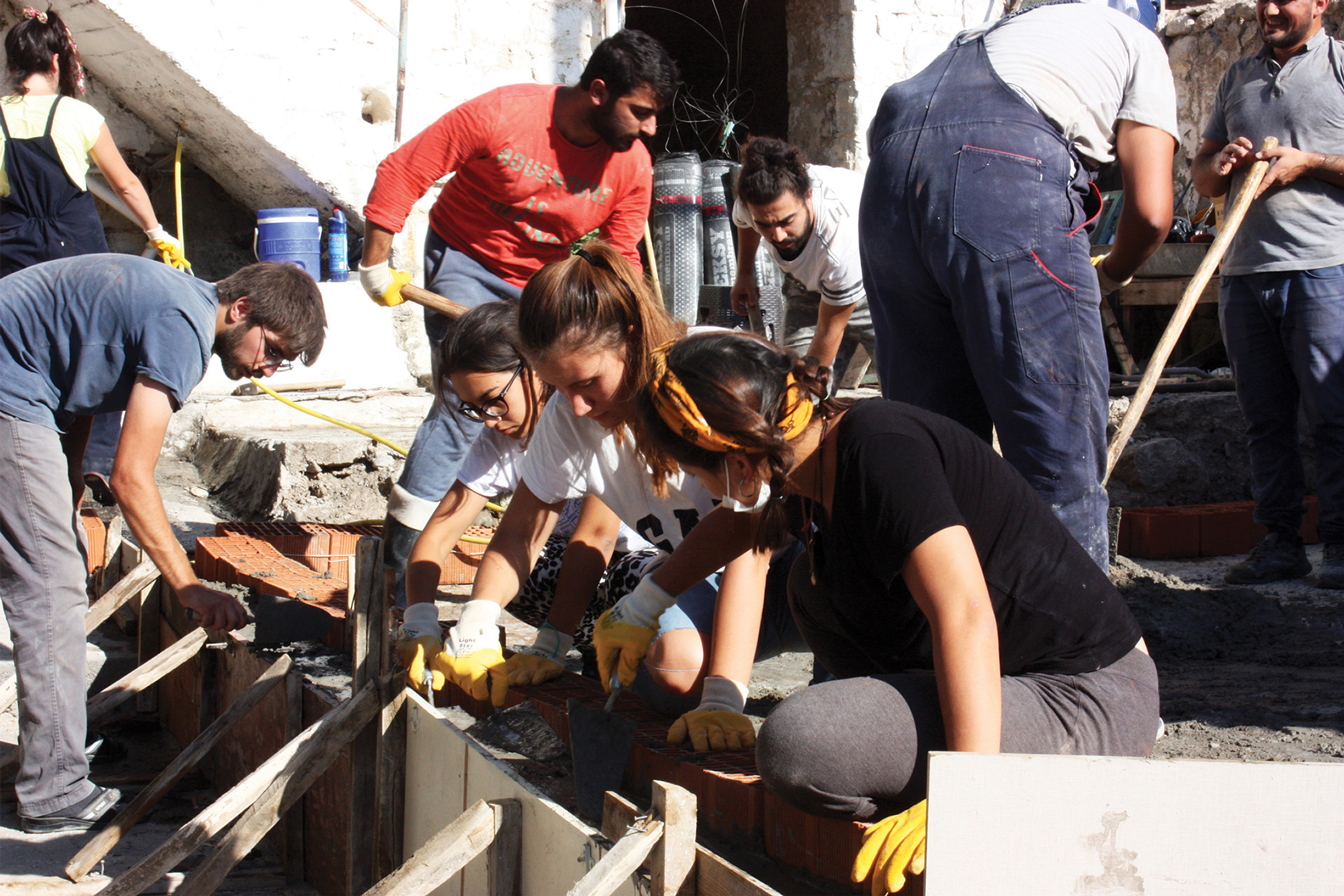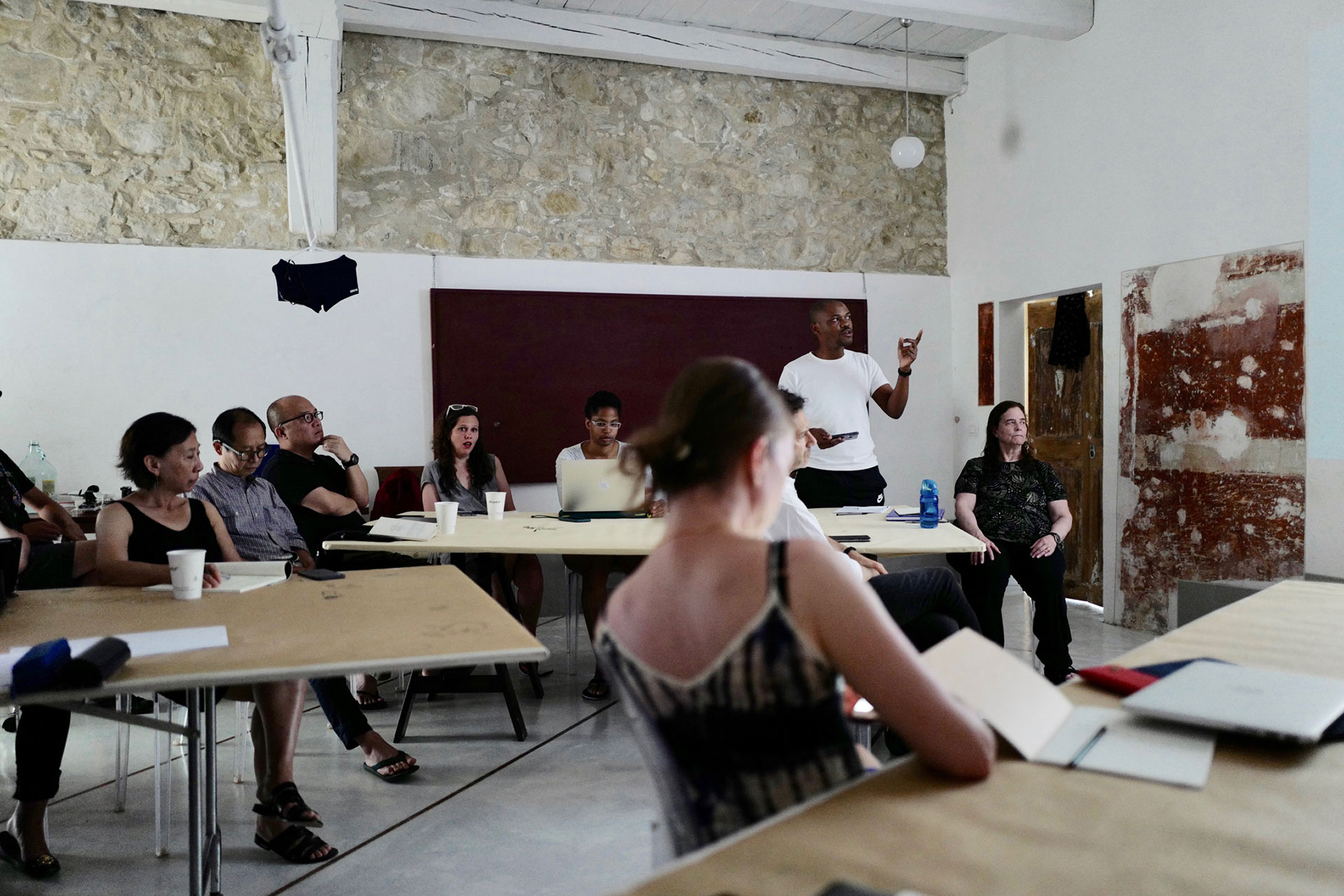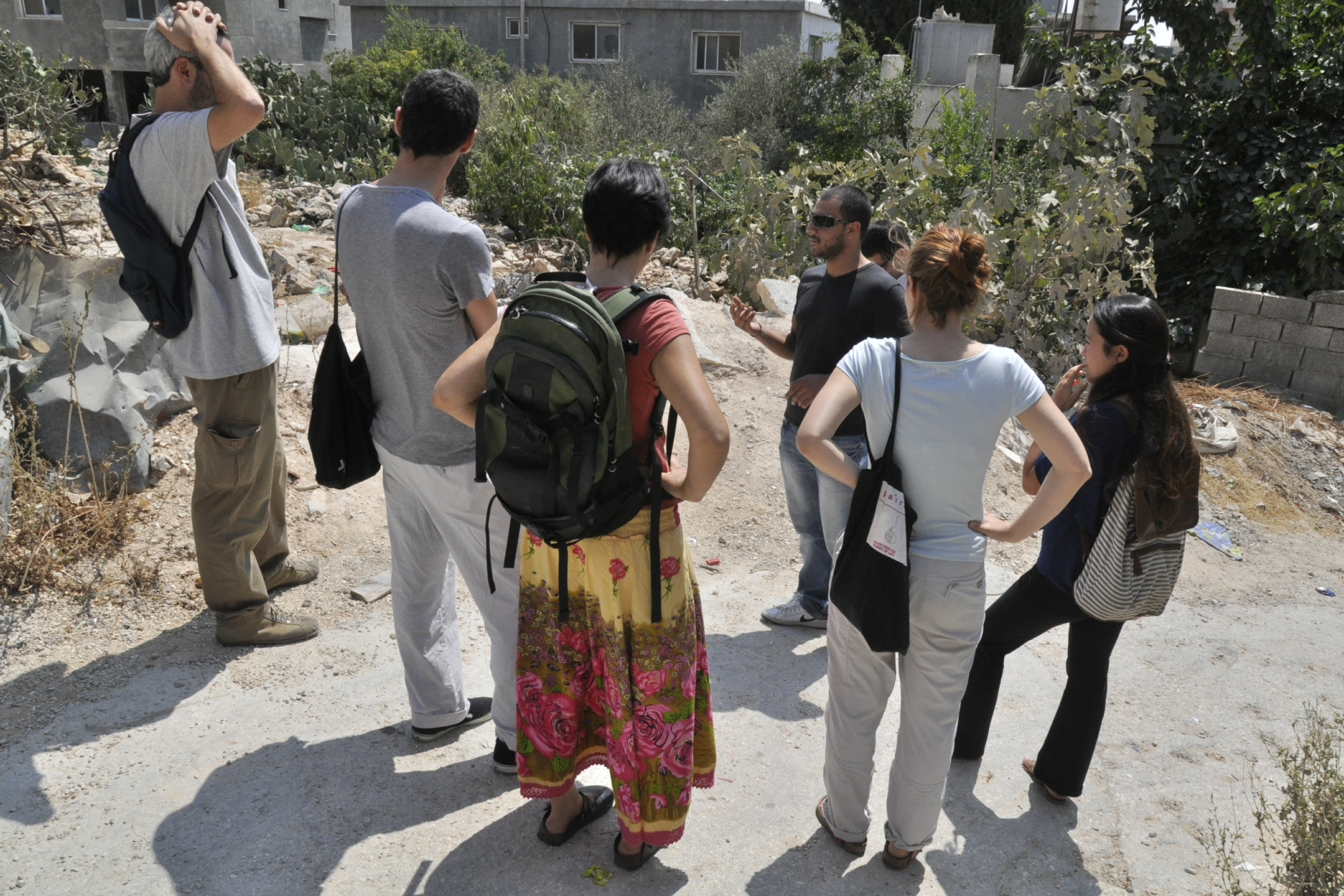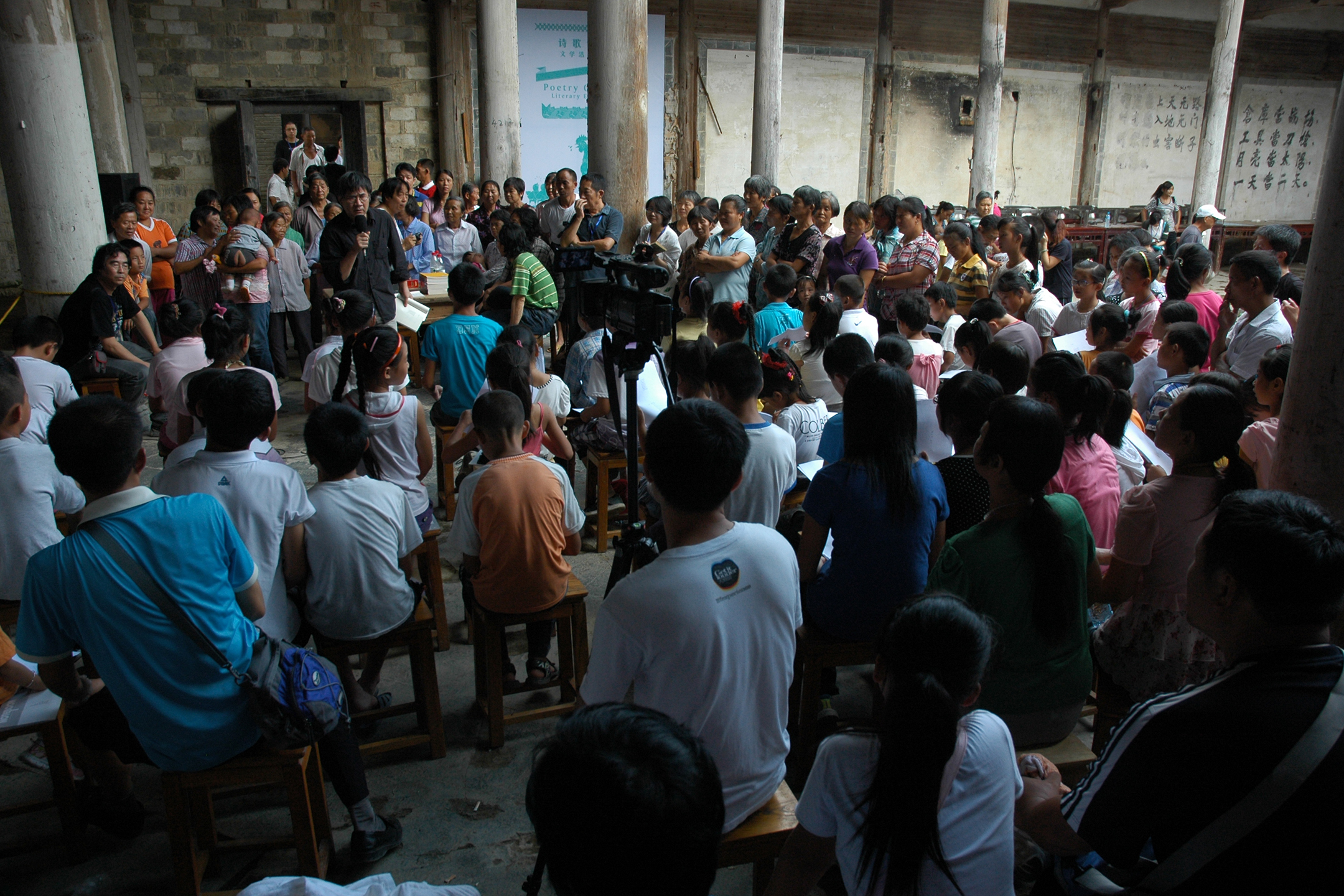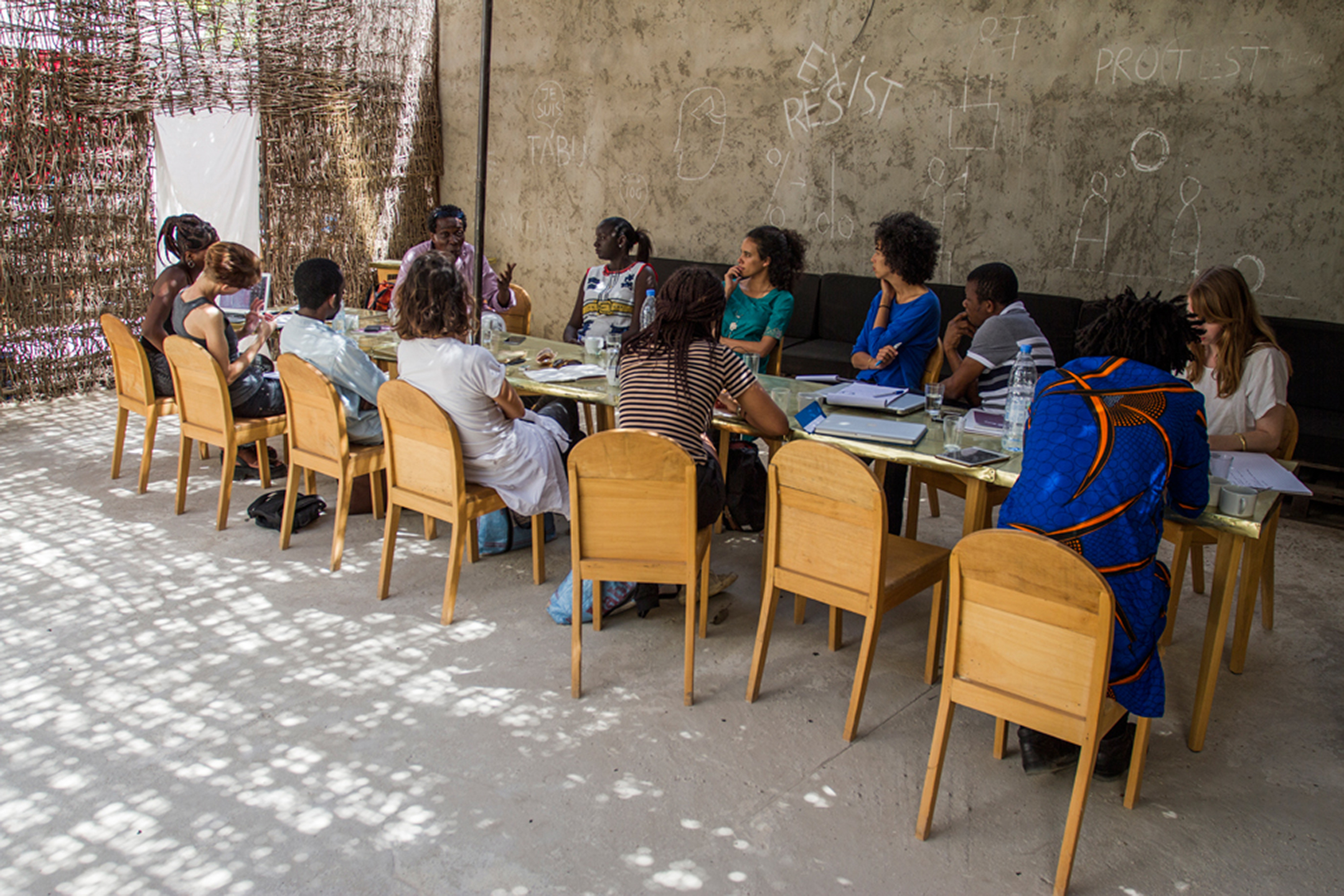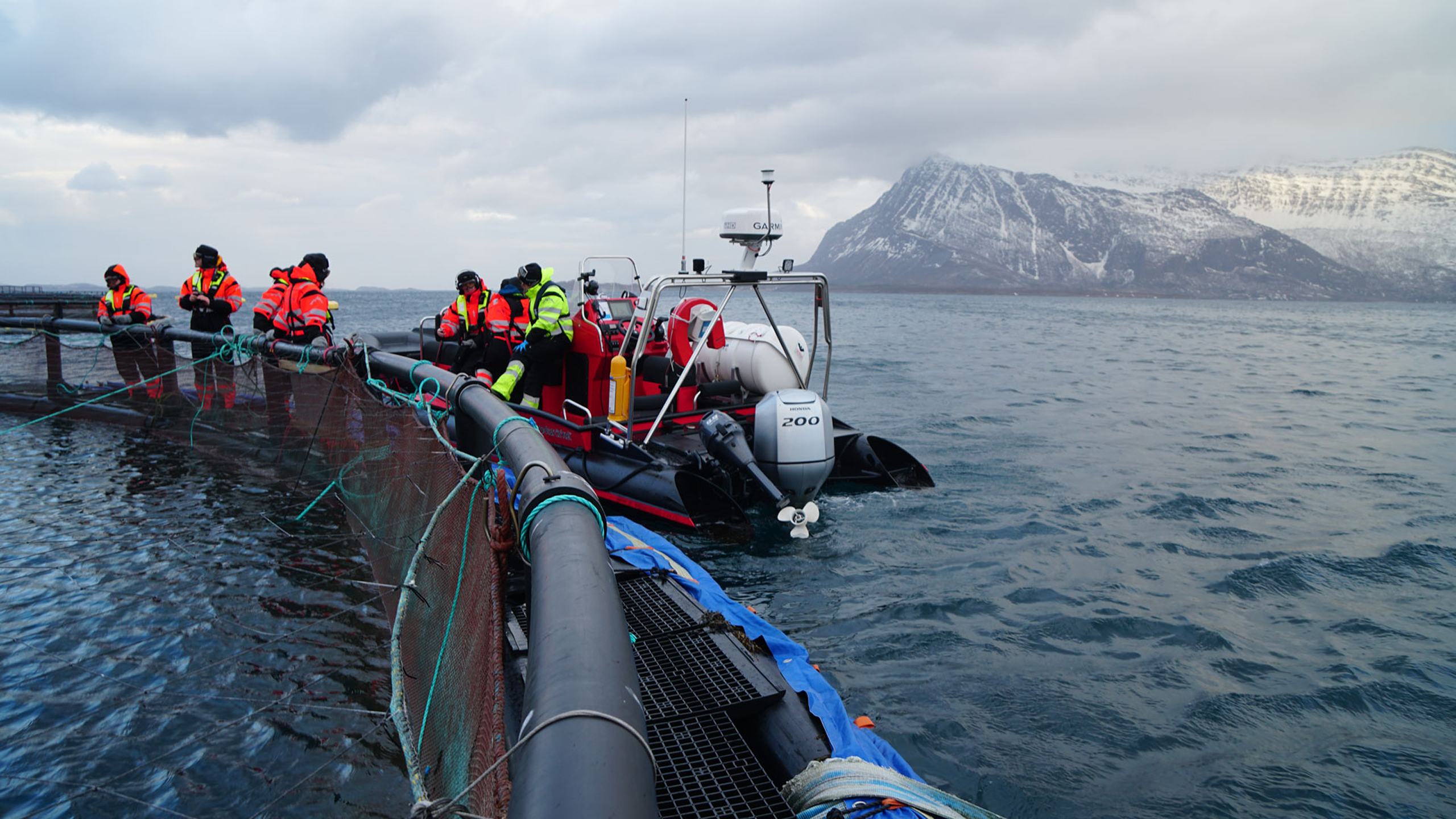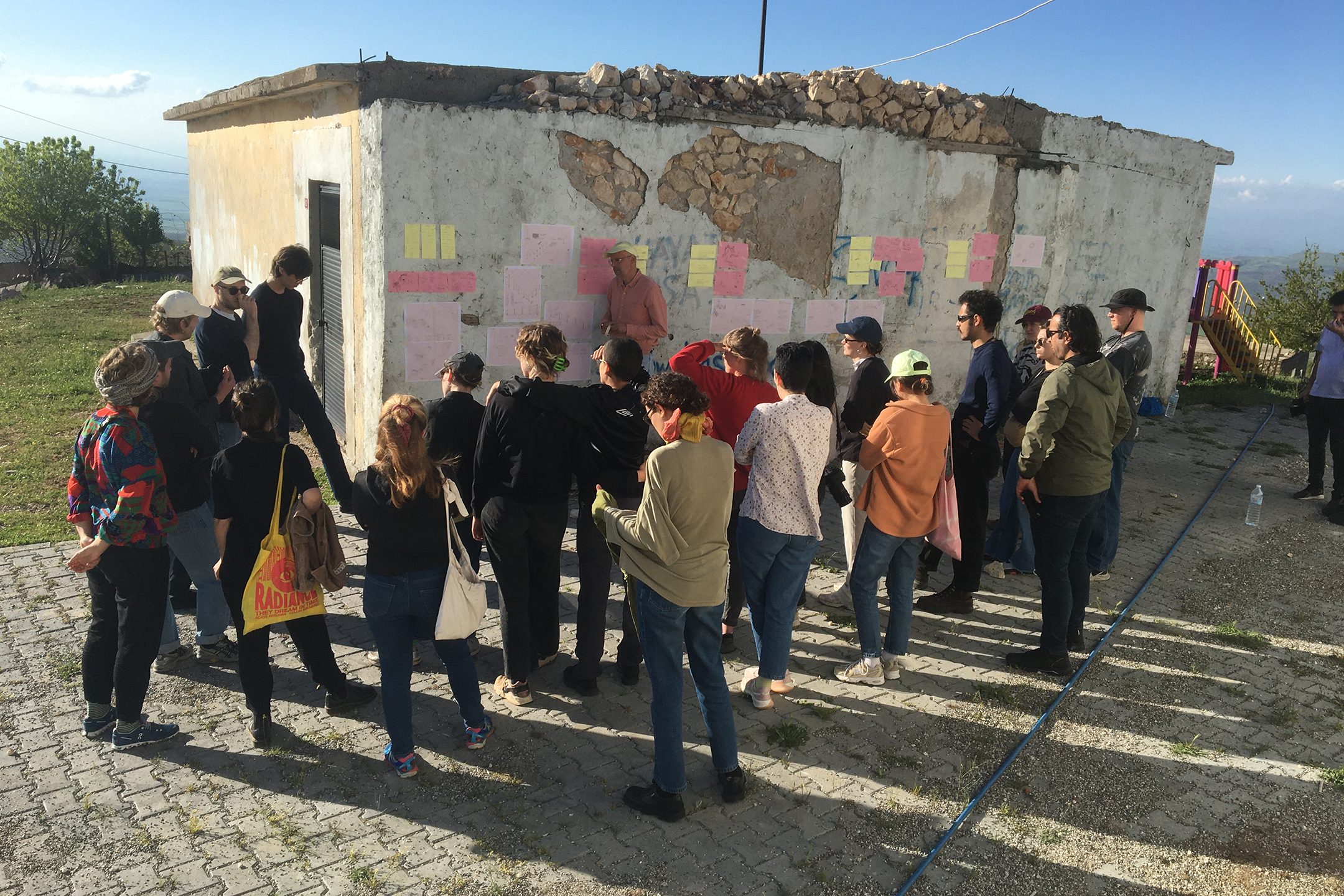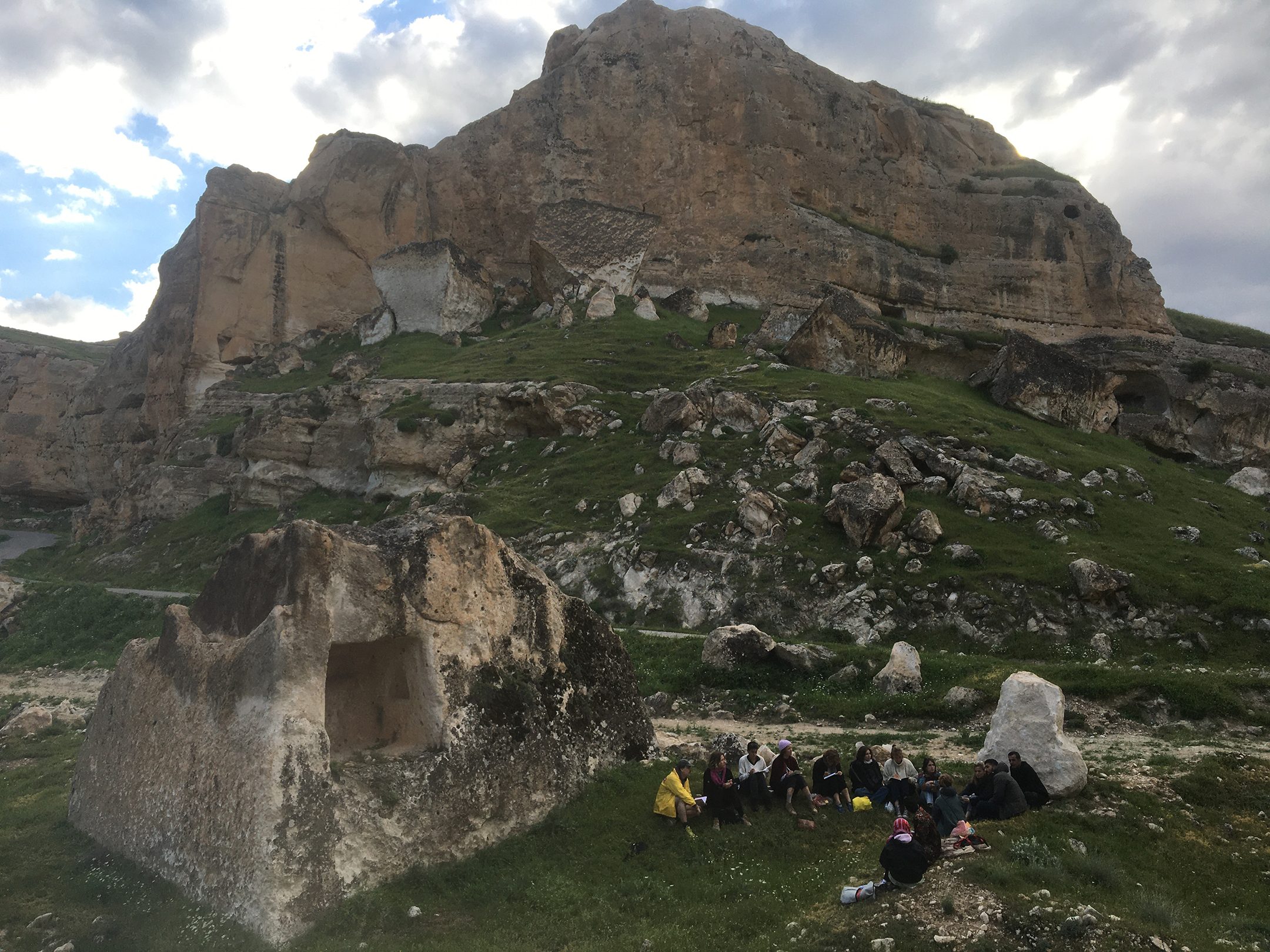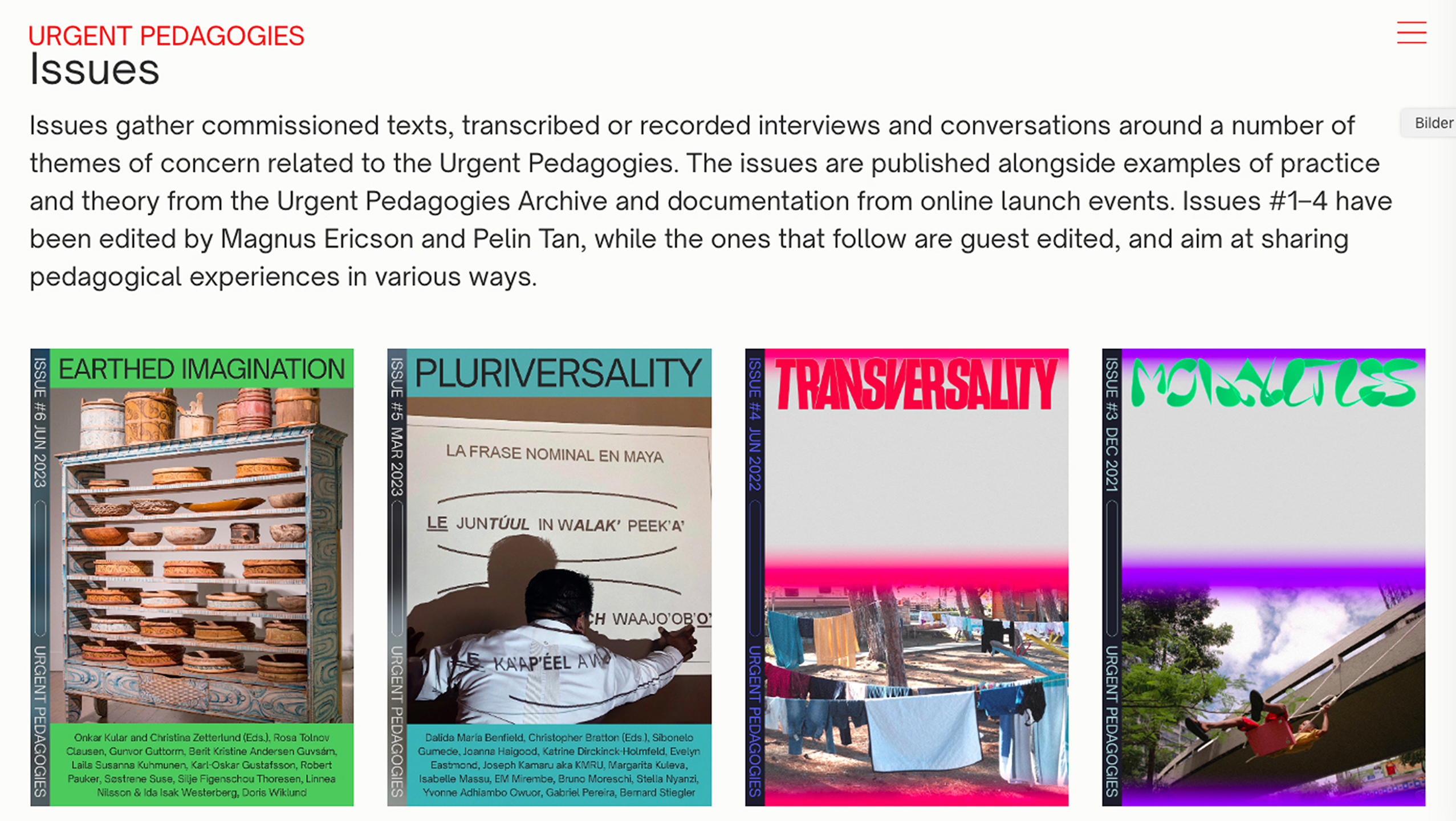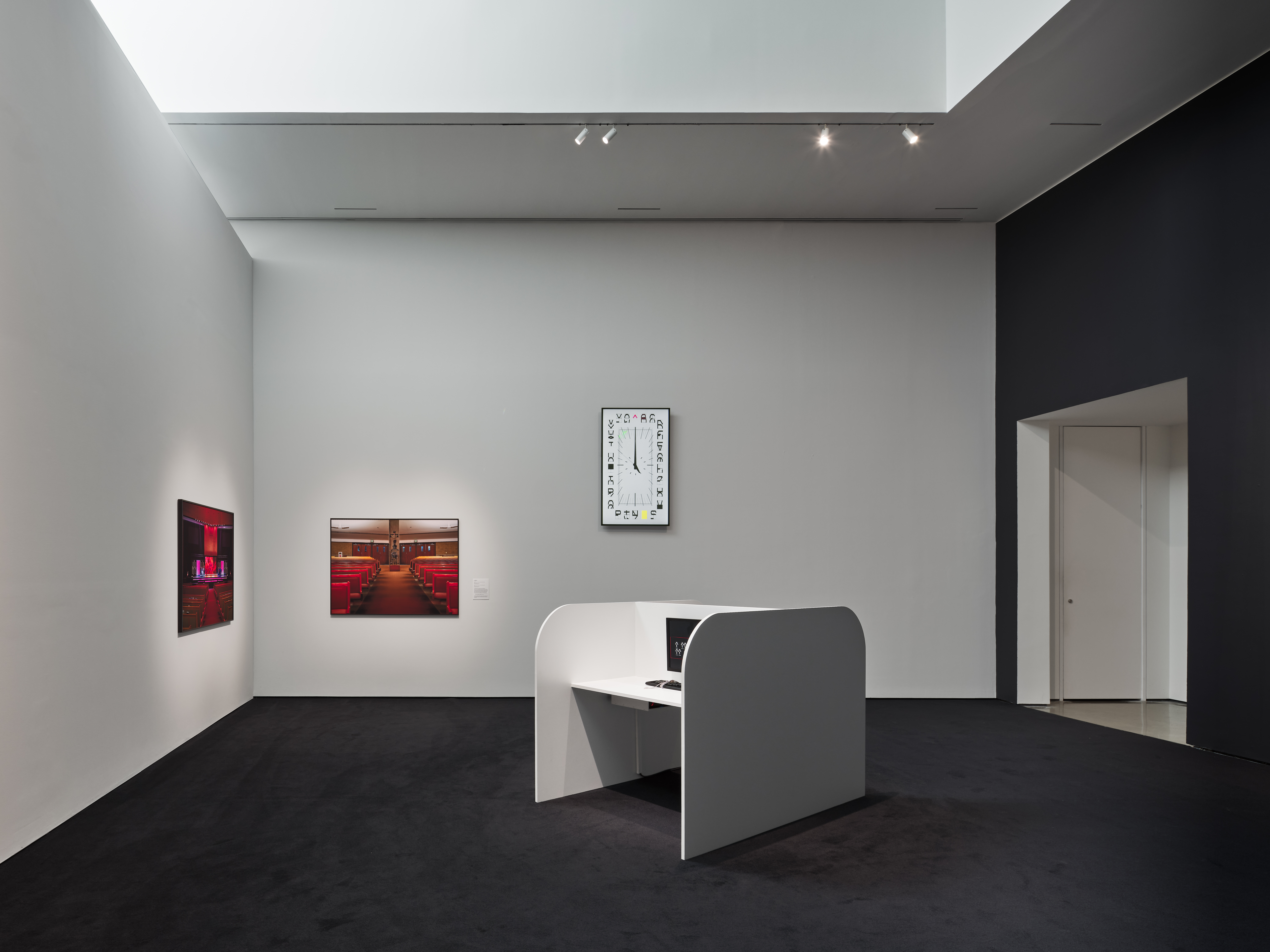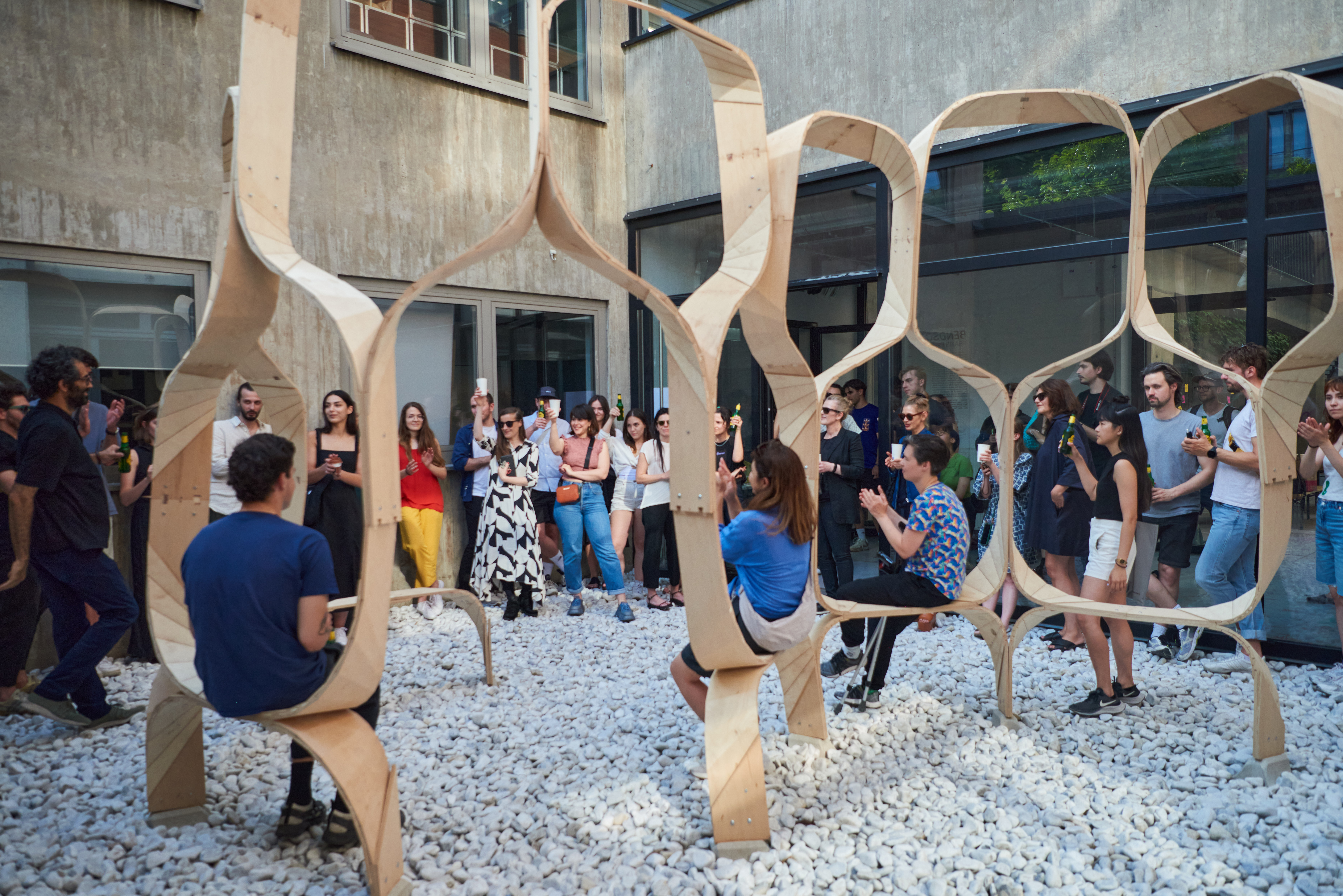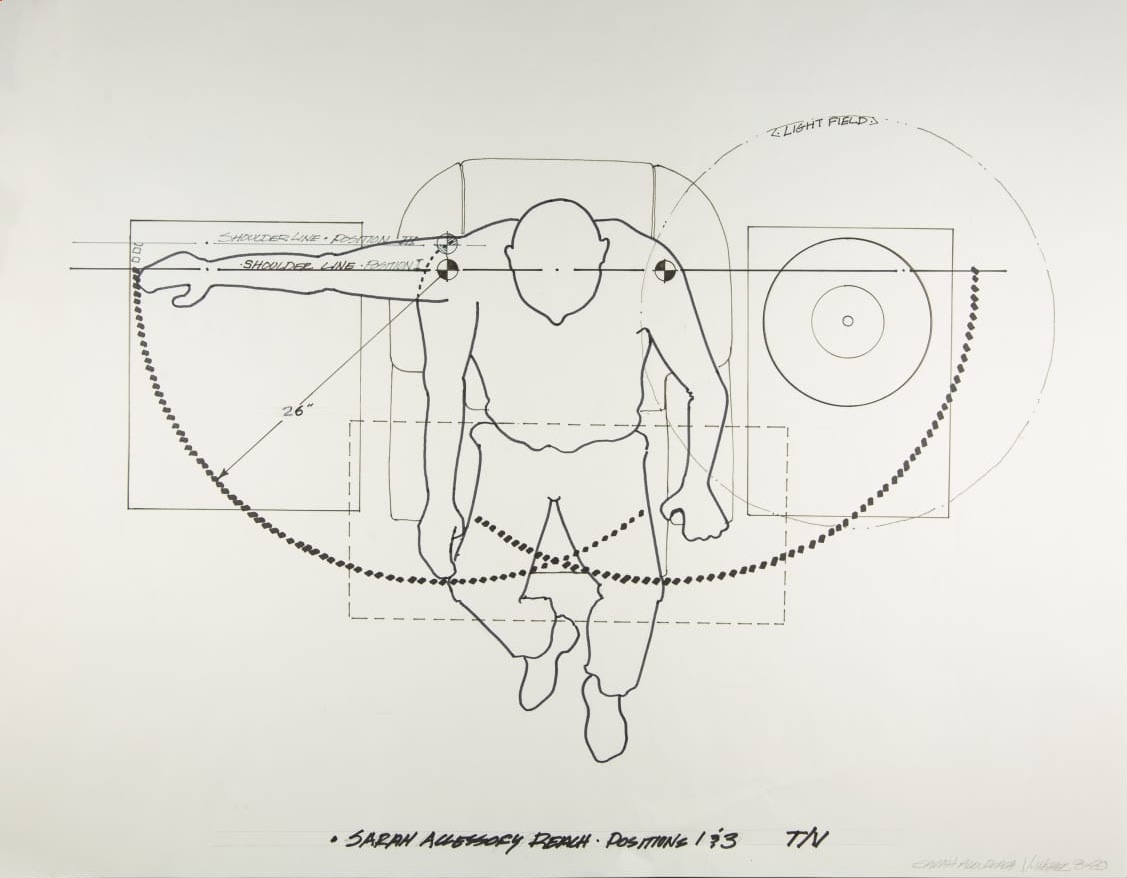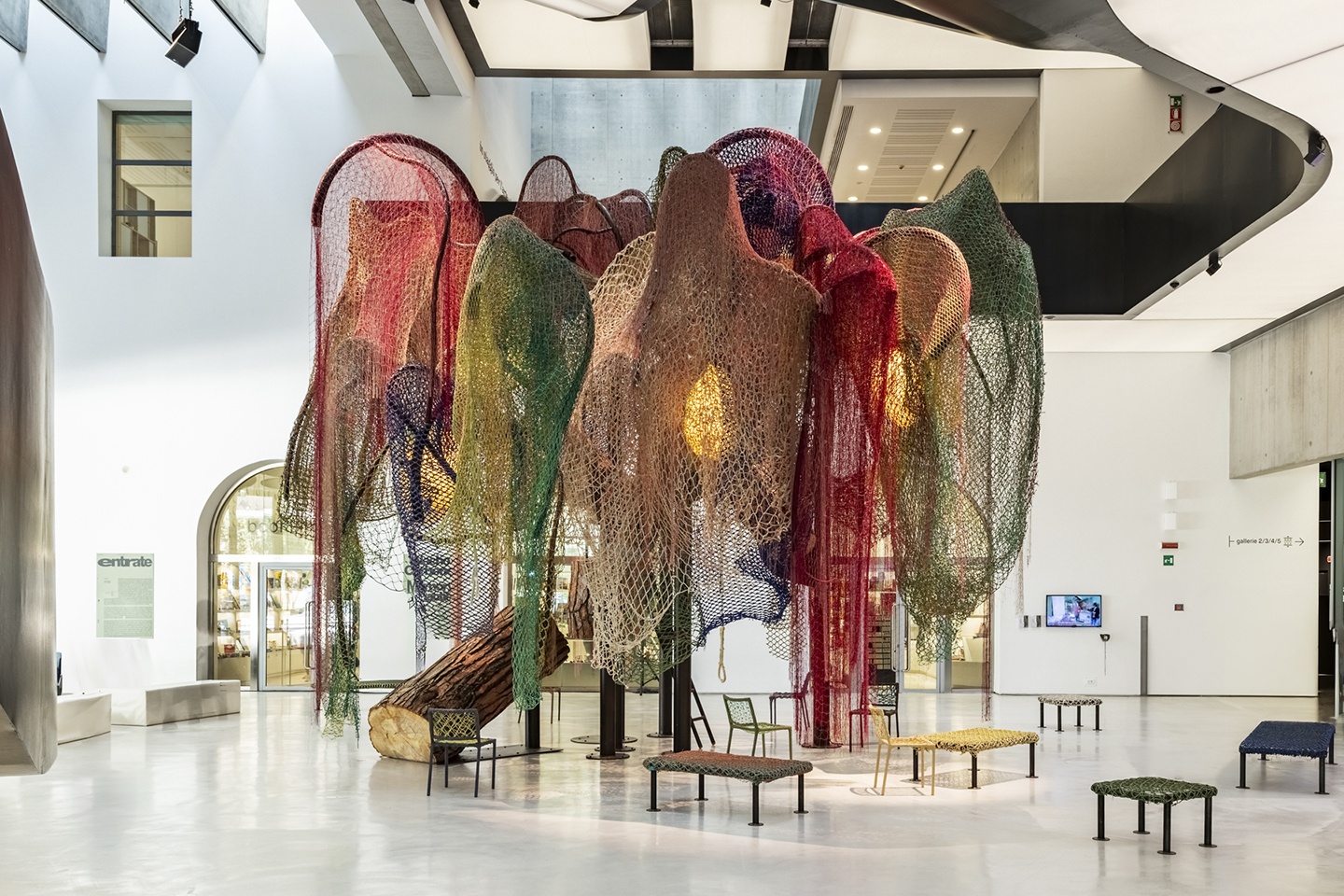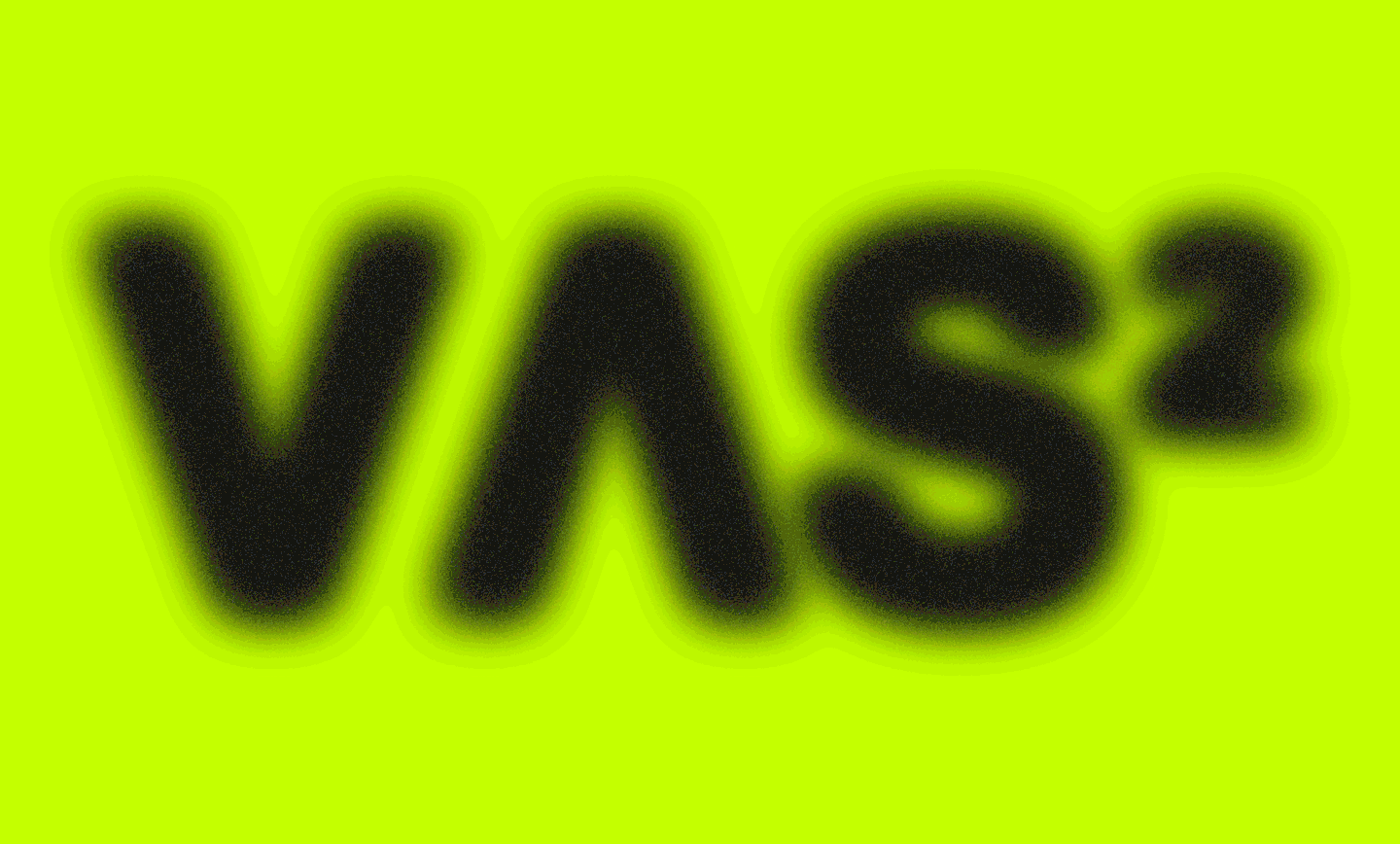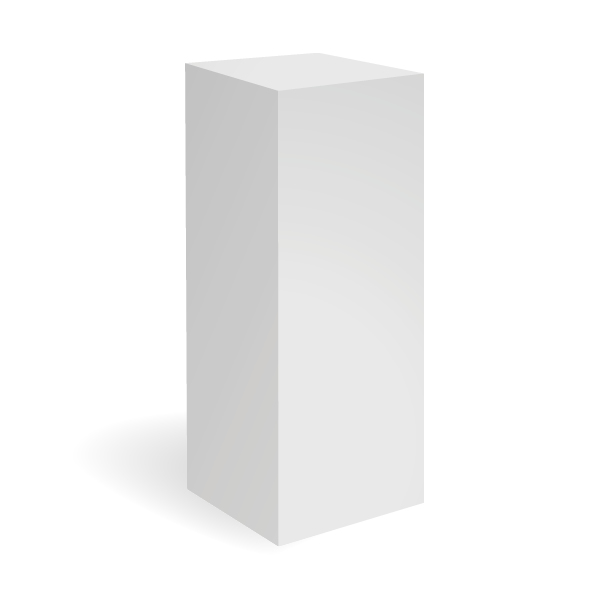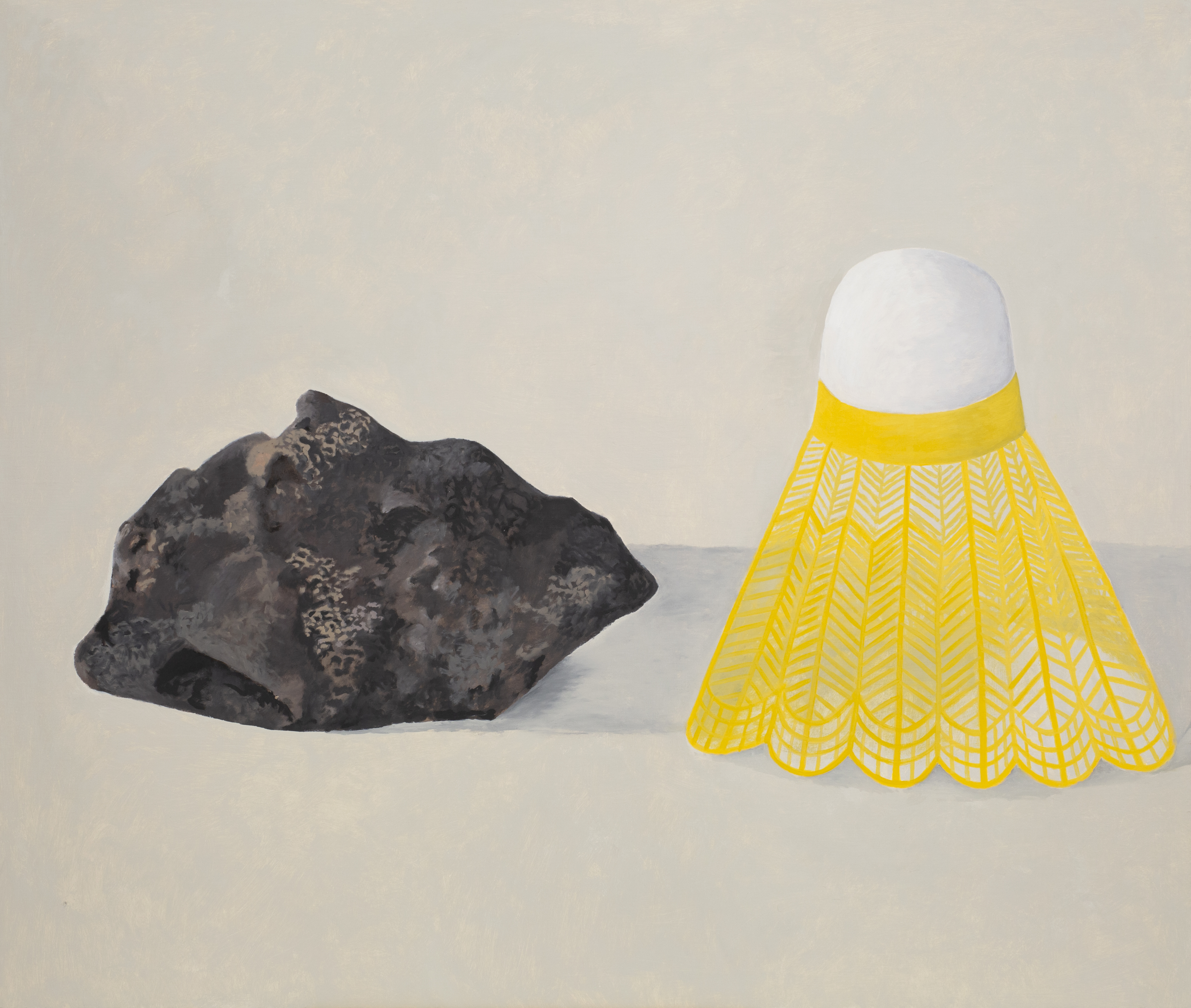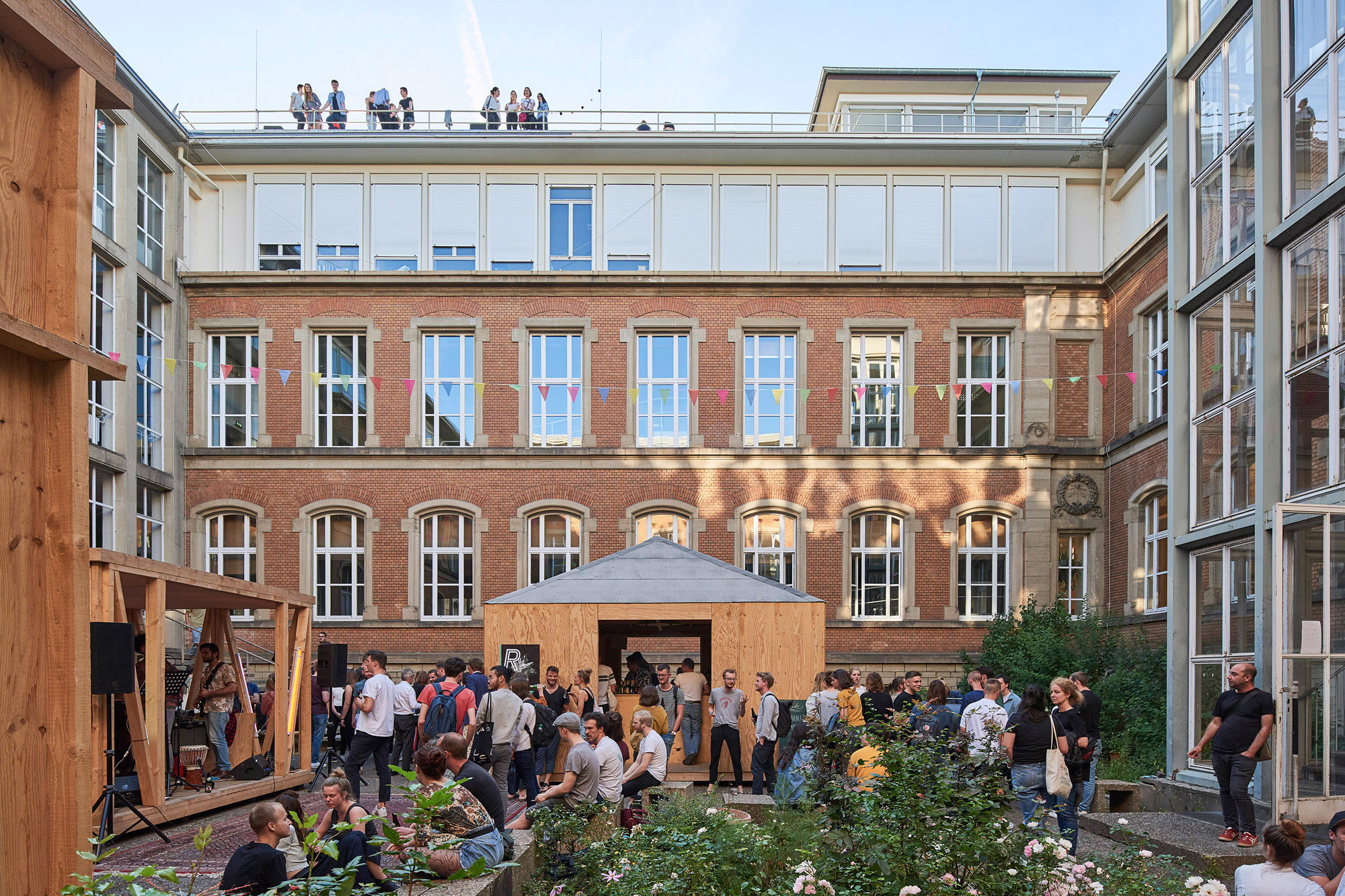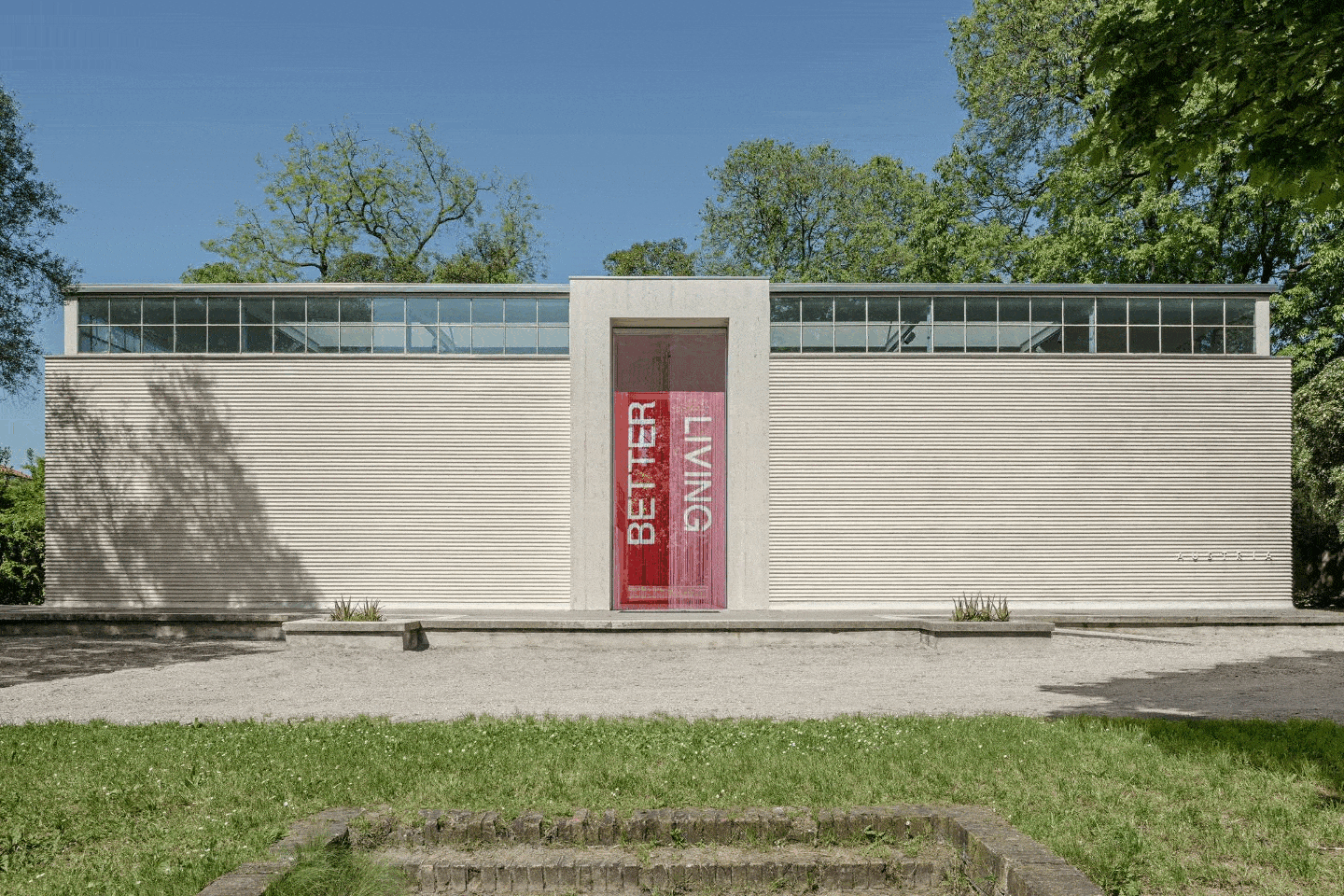https://urgentpedagogies.iaspis.se/
Why do you teach?
Pelin Tan: I have been involved with pedagogical practices for twenty years, and in that time, I have challenged myself to rethink what knowledge production is, to question institutional structures, and to produce in situ methodologies for meaningful engagements in urban space and social justice. Being educated in sociology and art history and having a practice “outside” of academia led to a long struggle with methodologies. After working in the architecture and art theory and history programs at the Istanbul Technical University Faculty of Architecture from 2001 to 2012, I sought out, with my architect colleagues, urban and social justice engagements in Istanbul, which hit its peak with the Gezi Park resistance in 2013. I should mention that my experience in urban activism and socially engaged art coincided with my academic work, which was supported by my PhD advisor Susanne von Falkenhausen at Humboldt University of Berlin, and my postdoc mentor Prof. Dr. Ute Meta Bauer at the Massachusetts Institute of Technology, who always provided support and discussion on the role of architecture in the struggle for rights. For me, it is essential to initiate collective unlearning environments while also questioning the body of educational institutions. As a methodology, taking action on-site, meaningfully creating improvised methods, and thinking about de/archiving as an alternative method have been vital for my pedagogical approach.
Magnus Ericson: I always hesitate to use the term “teach.” Throughout my career as a curator, I’ve used different positions and contexts to create spaces for learning, production, and exchange of knowledge. I have been active in academic environments almost since I completed my master in design back in the mid-nineties. From a frustration with how design and architecture were presented and discussed in Sweden at the time and from experiences from studying in the United Kingdom, where art theory was an obvious part of the curriculum, I thought the academy could be an environment where I could develop something to counter the poor Swedish discourse. Moving between art, design, architecture, and spatial and urban practice with a cross-boundary or transdisciplinary approach was something I believed had the potential to bring people together, not only from different disciplinary backgrounds but also from different geographies and cultural backgrounds. I should also be honest to say that this pedagogical approach was also a way of creating a learning environment for my own understanding of practice and theory. Now, in retrospect, I have realized that creating spaces for learning is a red thread through my practice
What were your experiences with education, or creating learning environments, before launching Urgent Pedagogies?
PT: In 2013, at the invitation of my colleagues, I moved to Mardin, in the southeast of Turkey, a primarily Kurdish region, to be a part of a new experimental architecture faculty. This was an experience of both success and failure: the intense sociopolitical pressure and also the variety of architectural pedagogical practices led the institution to fail, in a sense, but it was an experience from which I learned a lot. We were very close to the Syrian and Iraqi borders, and while trying to maintain and restructure an alternative curriculum and socially engaged education, the flow of migration from Syria started. The urban conflict and surveillance in Kurdish cities, including Mardin, Nusaybin, Kızıltepe, and Diyarbakır, was unbearable. Surviving day-to-day became a struggle that consumed the energy one needs for students and colleagues. Sometimes our collective classes, design studios, and on-site workshops became spaces for us to practice solidarity and sustain our collective energy. Failure can be important in experimental pedagogical practices under pressure of censorship or fascist threats, as well as the constraint of acting collectively. It is something like one step forward, two steps back. It is always important to instill pedagogies with comradeship and collective narratives of survival that exist outside of institutionalism.
I started to collaborate with DAAR (Decolonizing Architecture Art Research) in Bethlehem, West Bank, Palestine, and began to focus more on decolonizing pedagogical methodologies in art, urban design, and architecture. My students in Mardin were mostly Kurds and Arabs from the region. So, to operate in this context, first, I had to deal with linguistic and cultural differences and the daily intense political agenda of the region, which is a bit similar to the situation in the West Bank; second, I felt compelled to challenge the existing curriculum in architecture. In this, I had a lot of support thinking with practitioners Nishat Awan, İshita Sharma, Zahra Hüsssein, Markus Miessen, Jesko Fezer, David Harvey, Doina Petrescu, Laura Kurgan, Katya Sander, Merve Gül Özokcu, Yelta Köm, Yıldız Tahtacı, Mezra Öner, Sandi Hilal, Nomeda and Gedimiinas Urbonas, and Alessandro Petti, who led my students in seminars or shared in my learning and teaching. The importance of creating pedagogical alliances has always been clear to me, and here I refer to an interview with Stuart Hall. [footnote “Universities, Intellectuals, and Multitudes: An Interview with Stuart Hall,” interview by Greig de peuter, in Utopian Pedagogy: Radical Experiments Against Neoliberal Globalization, eds. Mark Coté, Richard J.F. Day, and Greig de Peuer (Toronto: University of Toronto Press, 2007), 108–28.] Hall understood “alliances” of pedagogical practice as neither permanent nor formal structures and addressed the issue as a decentralization of power, speaking across differences in a certain time and in a certain national condition. For me, pedagogical alliances are in solidarity with social and decolonial movements. Furthermore, my search for decolonial pedagogies and transversal methodologies is only possible through translocal alliances.
In 2015, with my master and PhD students, we went to Palestine and, together with David Harvey, Katya Sander, and DAAR, ran collective learning workshops at the Fawwar and Dheisheh camps, which I called “Autonomous Infrastructure.” This title was a bit provocative: it imagined institutions as an autonomous infrastructure that could be broken apart through “instituent” acts that also connected their pedagogical methodologies to social struggles and movements. Refugee camps, as sites of unlearning where pedagogies provide a commoning practice, are vital to my learning in survival and temporariness. I am also on the board of the İmece Initiative, based in İzmir, which develops educational assemblies with refugees and undocumented women and children, as well as, more recently, with earthquake victims in disaster zones. Along with humanitarian aid, our concern is to take a critical distance and focus on forms of solidarity and care with these constituencies. I conducted an architectural master studio in a temporary Yazidi refugee camp around Mardin with my students, examining spaces for women, healthcare, means of security, and collective action. This experience was important for us to learn from the Yazidi female labor cycle in building the camps and the solidarity network. Creating a collective-archive of this commoning pedagogy was the main methodology against violence and precarity of this community.
After running a workshop with Jesko Fezer on experimental design and the rural commons in 2014 in Mardin, we wanted to repeat this in situ collective pedagogy in Batman. And in April 2023, as part of a collective institutional program at Batman University, we have conducted the workshop “Terrestrial Cosmologies” with Fezer and Elisabeth Tauber and their students in the Kurdish and Yazidi villages of the Batman region of Turkey. These communities are under pressure from companies that want to evict them from their land to install solar panels that will harm the region’s biodiversity and threaten local animal herding practices. For all of us, engaging in the villages and using these lands as classrooms for unlearning and relearning from each other is very important. Pedagogy as solidarity is an urgent concern. And we have also sought to bring to the surface nonextractive practices that are connected to indigenous knowledges and cosmologies.
ME: Leading the development of a program in design and architecture for IASPIS, the Swedish Arts Grants Committee’s international program for visual and applied arts, from 2007 to 2009, I developed, with design researcher Ramia Mazé, the project “DESIGN ACT: Socially and politically engaged design today—critical roles and emerging tactics,” which aimed to highlight contemporary design practices that engage with political and societal issues and to discuss design as a “critical practice.” This project became a turning point for me, both for its clear focus on socially engaged and critical practices and for creating a space and platform for knowledge production that went beyond a public program to an online platform and many different events gathering practitioners and thinkers.
After my two-year commission at IASPIS, I started to work for the Swedish Museum of Architecture (now ArkDes), and there I continued developing spaces for learning through a series titled “The Project Room.” I invited design and design-related practices to develop work, research, or simply to consider inquiry into different subjects and contexts. The idea was to give space to practitioners while investigating what a museum could be and to give the museum visitors a possibility of understanding design as a process, something beyond objects or the built environment, and encountering practice “behind the scenes.” The spaces were programmed with workshops, conversations, and excursions, among other activities, to make this possible. The institution did not always appreciate the program because allowing the practitioners to develop things freely was seen as a risky operation. Many visitors, including children, loved it, but some others were confused, perhaps because they were used to a more didactic institutional approach.
Leaving ArkDes in 2014 I had the chance to develop a series of postgraduate courses at Konstfack University College of Arts, Crafts and Design in Stockholm: “Organising Discourse” (2014–16) and “Sites and Situations” (2017–18). I was asked to develop a course in curating craft and design, but in dialogue with the department, it transformed into a course to investigate and experiment with developing discursive spaces for socially engaged practice. The course itself was organized as an experimental platform for learning and knowledge production. The idea was not to “teach” a course but rather to curate a program of workshops and (public) presentations with mostly international artistic practitioners, curators, and thinkers. During these years a great number of Swedish and international participants and contributors, through various themes and issues, critically explored how to engage in urgent societal issues, contexts, and conditions and scrutinized artistic practice, for example, by considering how difficult social engagement and participatory processes relate to positions and effects on vulnerable bodies.
In 2018, after a number of years of the postgraduate courses and curating the annual “Research Week” at Konstfack, as well as my curatorial projects, I returned to IASPIS to lead the program in “Applied Arts”—design, craft, architecture, and spatial and urban practice. Here, the project Urgent Pedagogies was developed, first as “Learning and Unlearning through Spaces of Exception,” a symposium for “A School of Schools,” the 4th Istanbul Design Biennial, curated by Jan Boelen. The idea was to discuss how socially engaged practice may engage in urgent issues related to different conflicts and what role alternative pedagogy and forms and environments for learning may have. This was, of course, an approach based on my own interest and experience of the postgraduate courses at Konstfack but also through my encounter with Alessandro Petti, who had recently initiated Decolonizing Architecture Advanced Studies (DAAS) at the Royal Institute of Art in Stockholm. He had a similar approach to creating a learning environment, and so we offered our course participants the opportunity to informally take part in activities within both of our courses, creating exchange among participants. Here, I also met Pelin again after our first meeting in 2008, when she was an IASPIS resident.
Returning to the idea of pedagogical alliances, how does Urgent Pedagogies create those kinds of relations in practice?
ME: The project was developed within the IASPIS public program but was also intended to be a space to develop new alliances within socially engaged practice. During the second, larger public seminar in Stockholm, which was loosely linked to DAAS, we had a concluding session where invited guests and students suggested that this project could become a space to share knowledge and experience related to alternative pedagogy. This was the seed that grew into what the project is today.
When the pandemic hit, we realized quickly that this situation was something that would go on for a long time and decided to transform the project into an online platform. Instead of developing more public programs, we started to commission practitioners and thinkers to write articles or submit online presentations and interviews. Zoom made this possible, and as it developed as a software, we used this tool for recording, transcribing, and, later, organizing online events.
PT: Urgent Pedagogies came out of the need to bring together many practices and experiences as an alliance and to talk to each other about our struggles. After Magnus contacted me about initiating a project of pedagogical experience in the translocal context of arts and design, we started the project as public events and workshops. With Covid-19, we moved to create a digital platform that can function as an archive, which now indexes practices from around the world and video interviews that we have conducted about pedagogical experiences—not only successful examples but failures too.
ME: The online platform was developed together with the marvelous graphic designer and artist Johnny Chang, and organized as an archive. Next to the contributions mentioned, we started to research and present platforms, organizations, and projects related to “urgent pedagogies” and presented these alongside documentation of earlier public events and the articles, presentations, and interviews that we developed. When we had enough material to go online, we started to present it in “Issues,” collections of texts, online presentations, and interviews.
The pandemic actually facilitated a completely new approach here. For example, we had been in touch with Gustavo Esteva, founder of the Universidad de la Tierra in Oaxaca, Mexico, to invite him to Stockholm, but he had stopped traveling because of his age. But because of the proliferation of Zoom, we instead were able to conduct a long interview with him online. Through this opportunity to connect almost face-to-face with people regardless of where they were, we started to meet with people from different geographies and contexts—from East Asia to the Middle East to Africa, Europe, Latin America, and North America—and to develop different contributions for the platform. This opened up for an amazing possibility to build new alliances and friendships.
How does the platform translate socially engaged and critical spatial practices conducted in the field, in the translocal contexts of art and design, to digital space?
PT: Living archives offer a vital methodology to map practices: an urgent pedagogical experience in one condition and region might link to another practice that is in another place and responds to a different kind of urgency. I think each pedagogical initiative, whether long-term or temporary, comes from its own sociopolitical history and practice of social struggle. In this context, it was important for us to find diverse practices in various regions that have had a unique impact not only on art and design methodology itself but also on the practices’ social environments. Some keywords that have emerged in socially engaged art and design history in the last twenty years— instituting, interactive audience, in situ knowledge production, indigenous cosmologies, urban strikes—lead us to examine critical spatial practices in specific places. We have conducted video interviews to hear from many practitioners about the urgency of their practices and their impacts, struggles, and failures. For example, what is the infrastructural role of the academic program at Ashkal Alwan in Beirut under Covid and amid local social movements, as developed by curator Christine Tohme? How does migration and refugehood affect our knowledge production, as when architect Amalia Katopodis goes into the temporary refugee camps of the Aegean coast? How are these practices connected? As a digital platform, Urgent Pedagogies archives live, active practices and connects these practices to one another. As well, the platform aims to link back to and create alliances that we physically enact in meetings, workshops, and gatherings in situ. The archive functions from the digital to the physical in a reciprocal way.
What role does publishing play in disseminating the work of Urgent Pedagogies?
ME: We developed the first four “Issues” from the materials we had and loosely framed them within different topics. The initial idea with the text commissions, presentations, and interviews followed a “table of content” for a possible future publication, organized with chapters looking at different urgencies, methodologies, and ways of organizing. For each issue we organized an online launch event where we invited the contributors and guests as “respondents.” This became another, more concrete space for new encounters and possible alliances.
After four issues edited by me and Pelin (with the assistance of a few wonderful people like Roberta Burchardt and Michelle Song), we started to commission guest-edited collections focusing on pedagogical practices. The first one, “Pluriversality,” was developed by Dalida María Benfield and Christopher Bratton, cofounders of the Center for Arts, Design, and Social Research (CAD+SR), an organization that has been mobilizing polycentric platforms since 2017. CAD+SR and “Pluriversality” ask: What new possibilities emerge when education is detached from its institutionalized forms, its places, and situates itself in other worlds?
The second guest-edited issue, “Earthed Imagination,” has been developed by Onkar Kular and Christina Zetterlund, cocurators of Luleå Biennial 2022, Craft & Art, to consider the different ways the biennial engaged and facilitated learning and collective imagination through its physical and digital “Learning Room” platform and program. Two upcoming issues will present the Arazi Assembly, a research assembly that consists of researchers that are working together in different spatial scales focusing on the southeast region of Turkey, and “Topological Atlas,” a project that investigates the relationship between technologies of border security, systems of documentation, border landscapes and the experience of crossing borders without papers, with the focus on borders between Pakistan and Iran and Iran and Turkey.
To open up new possibilities we have developed a new format within the project that we have called the UP—Reader. This is based on newsletter technology and designed to allow for presenting more singular contribution that are not related to a particular issue. UP—Reader invites people to publish already existing texts related to research, projects, and other material from the UP archive and announces events and other activities. Through the UP—Reader we like to share the project space and make it useful for people within the emerging network around Urgent Pedagogies.
PT: The issues help us to assemble practitioners around some specific concepts and to discuss them in historical, theoretical, and practical senses. For example, for the issue “Modalities,” we invited curator and researcher Silvia Franceschini to write about curatorial practice as a possible space for “epistemic disobedience,” as she had completed a dissertation on urgent pedagogical practice. Designer and activist Michael Leung used the space of community organization for pedagogy and collective learning in the streets of Hong Kong. Connecting such practices to the history of Brazilian student protests brings us to the activist collective Grupo Contrafilé (Cibele Lucena and Joana Zatz Mussi), which shared their experience on community pedagogical practice. In each issue we go through concepts, questions, and specific regional practices by commissioning an article or an interview. We like to create a map of connection from these various practices that tells us how pedagogical practices are formed by histories, social movements, institutional contexts, and geopolitical conditions.
What successes and failures have emerged in the course of producing Urgent Pedagogies, and how have they informed the program’s development?
ME: Failures are important when it comes to learning, of course. I think that an experimental project like Urgent Pedagogies always risks becoming difficult to handle because it tends to grow in scale. Two dedicated people like Pelin and I, thinking that a project like this is really important—or at least tries to contribute to an urgent subject—might have a tendency of including a lot of information and making new connections that evolve the project beyond its limits. So perhaps the failures—or rather difficulties—are mostly related to institutional practice and its limitations. I’m the only one at IASPIS working on this, alongside many other activities, and despite the marvelous contribution from Pelin, it sometimes feels like there’s never enough time. This means that it is a slow project, which may be a good thing, but this is also problematic, since I think we need a more consistent pace to avoid losing our “audience.”
We have, of course, also faced smaller failures, such as making a few rather unsuccessful or very time-consuming interviews and trying to reach out to people and organizations that never responded. We presented the seminar “Infrastrucures” in Venice in the very last week of the previous Architecture Biennial almost to no audience (but with a very nice lineup of contributors). On the other hand, we presented a series of seminars (titled “Methodologies”) during the preview days this year, with both a good audience and great contributors (including two Golden Lion recipients).
PT: I mentioned earlier my experience of failure in building and testing methodologies of experimental pedagogy in the face of censorship, political oppression, and other issues. But the important thing is to sustain the collective will of pedagogical assemblies, which can thrive under adverse conditions. In regard to Urgent Pedagogies, it was important for us to reach out to activists and curators who might be struggling to run their institutions as a social collective spaces or alternative academies and who work on the periphery. All these actors and collectives face many diverse sociopolitical constraints, and even conducting interviews is not always easy. Language problems, precarity, and other issues lead to difficulties in describing their practices of urgent pedagogies. This I find to also be a failure: urgent pedagogies in process are sometimes difficult to describe as there is not always language available. Trying to archive an experimental practice on transversal methodologies and urgent pedagogies, which is our concern, leads us to build a de/archive or counterarchive, an archive of failures.
Could Urgent Pedagogies then be understood as a kind of toolkit for emancipation, care, action, solidarity, and resistance in response to conflict?
PT: I personally strongly believe so. I see here the “conflict” as a space of capitalist extraction, militarization, and current colonial oppressions that may change with collective unlearning and transforming modalities within institutions. Art and architectural education and methodologies have the power of recreating such emancipatory spaces and unlearning collectivities.
What do you envision for the future of art and architecture pedagogy, and how can it be achieved?
PT: There is a huge institutional crisis in art and architecture pedagogy due to the contradictions between learning and methodologies and neoliberal capitalist markets. Many artists, architects, and spatial practitioners are searching not only for alternative methods of education but also alliances of engagement with various actors and institutions. Spaces of solidarity and friendship and assemblies of bodies seem more vital bases for future pedagogies. Such pedagogical practices also lead back to very formal educational institutions too. Many inspiring archival projects, like Princeton University’s research project “Radical Pedagogies,” which I also participated in, focus on practices of the first half the twentieth century and how they contribute to future practice. As a living and contemporary archive that works not only in digital spaces but also in situ, Urgent Pedagogies creates many routes of assembling with various alliances that probably will sustain future discourses and practices and have a social–political impact in the longer term.
ME: I think that formal education, in both Western and non-Western contexts, is struggling with hierarchal and bureaucratic systems and high demands to produce architects and urbanists that serve the market. There are, of course, great institutions fostering critical practice and theory but still rather marginally so. I don’t know about the future, but I suppose we have to rely on different initiatives on very different scales.
Urgent Pedagogies shows that there are still pockets of resistance within universities. But perhaps more importantly, many more informal initiatives are developed by practitioners, as projects, sometimes as part of research, but also through different organizations that operate within the realms of civil society or art and culture. Here, the art field often serves as a possible space, sometimes even with public funding. The interest in pedagogy has been prominent for years in art—“the educational turn”—and has brought new discourse and practice and, more recently, interest in historical examples of radical architectural pedagogies has been important.
In our project and archive, interesting examples range from long-term engagements, such as Universidad de la Tierra and Munir Fasheh’s use of the concept of mujaawarah in Palestine, to alternative approaches within universities, such as Decolonizing Architecture or Countering the Cyprus Militarization, or as alternative spaces with relations to academia, such as Campus in Camps, Eco-Nomadic School and The Center for Arts, Design, and Social Research, to spaces within the art sphere, such as Askal Alwan, RAW Material Company and Open School East, to initiatives developed by practitioners and thinkers, such as Herkes için Mimarlık (Architecture for All), Grupo Contrafilé, and Cohabitation Strategies (to mention only a few).
I suppose learning to unlearn and using alternative and critical methods to produce and share knowledge is more important than ever in relation to current urgencies of social justice and equality, decolonization, and environmental challenges. The interest in alternative pedagogies also contributes to a wider institutional critique related to the domination of Western discourses, which I think perhaps is the most important now. Returning to the initial idea with the project, to make possible new alliances, I sincerely hope that we can contribute with facilitating a space where ideas, approaches, methods and perhaps even resources can be shared.
“Universities, Intellectuals, and Multitudes: An Interview with Stuart Hall,” interview by Greig de peuter, in Utopian Pedagogy: Radical Experiments Against Neoliberal Globalization, eds. Mark Coté, Richard J.F. Day, and Greig de Peuer (Toronto: University of Toronto Press, 2007), 108–28.

